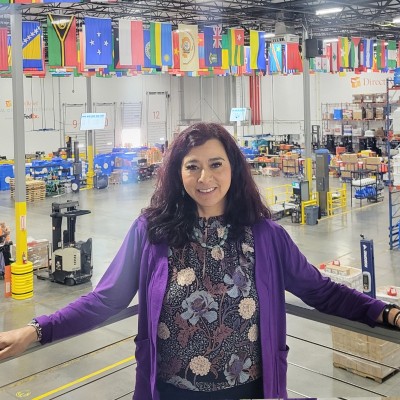A nonprofit organization has aimed $10 million at keeping tribal health clinics powered up and online during power outages.

Direct Relief, a multinational direct aid nonprofit based in Santa Barbara, Calif., has dedicated a portion of its Power for Health program specifically for tribes. The initiative provides solar support and battery storage installations at tribal clinics across the country, ensuring that they can continue operations no matter what.
That’s crucial, owing to the central role these health clinics play in keeping people safe on reservations, according to Kimberly Dutcher (Diné) government relations advisor for Native American affairs at Direct Relief. While specific projects weren’t ready to announce, Dutcher told Tribal Business News there are multiple tribes on the docket for support, including two in Arizona, and then one each in Utah, Alaska, and Louisiana.
The program was initially announced in February this year. After determining first recipients, Direct Relief hopes to expand its outreach efforts. Dutcher explained that the initial group of projects is intended to demonstrate the benefits of implementing solar arrays and storage solutions: clean and reliable power with reduced energy costs. This allows clinics to redirect funds that might have otherwise gone toward rising utility bills elsewhere.
“The provision of healthcare is reliant on a continuous, reliable source of power,” Dutcher said. “We’re not aware of anyone else who’s doing this type of work in clean energy.”
Dutcher spoke with Tribal Business News to talk about the health program, as well as Direct Relief’s broader efforts in Indian Country.
How did the Power for Health program come about?
It arose from work Direct Relief did in Puerto Rico in 2017, after Hurricane Maria devastated the area. We had folks on the ground providing medical supplies and pharmaceuticals, but the clinics were telling us they needed power.
Direct Relief got their donors together, and that was how it was born - mainly out of the need. As they did that work, they began to appreciate the necessity of ongoing, continuously available power.
How did you decide the program was needed in Indian Country?
We've heard stories from clinics first hand where they lose power - and most commonly, it's losing the medicines, losing the cold store medicines. A couple clinics have told us that.
Another reason this makes sense in Indian Country in particular - in a lot of tribal communities, the infrastructure is aged and not very robust, so an already vulnerable population is more vulnerable, then when you layer an aged infrastructure on top of that, it contributes to an additional vulnerability.
Healthcare access can already be pretty sparse on reservations, too.
The health clinics can sometimes be few and far between - I'm Navajo and where I live, and where I'm from - on certain parts of reservation, the clinic is a couple hours drive. That really can impact people if that place closes.
How do you select your projects? How did you land on those first six partnerships?
When we were considering which clinics to target, we looked at FEMA data. They have a social vulnerability index, so we looked at that to find out about which areas were more vulnerable. If someone hears about us, we're willing to look at them too.
What does support look like once a project gets started?
We grant directly to the clinic, and then we do the design work and the feasibility work through a partnership with [Easton, Maryland-based solar company] American Microgrid Solutions. We figure out what the clinic’s specific needs are. HVAC might be their priority or a critical care center they need to keep operational. We work with them to find the system that best works for them.
There isn’t a match the tribe needs to worry about finding, either. When the project is done, it belongs to the clinic. We provide five years of operations and maintenance work, and we work with tribes to get someone who knows how to take care of the system on board. Then these systems go on to last 25-30 years - it’s a really long term investment in these health clinics and Native communities.
Direct Relief has worked in a lot of countries across the world. What pulled the focus back home to Indian Country?
The pandemic really taught them about the needs out here in Indian Country. For example, I was the deputy general counsel for the Navajo Nation when the pandemic hit, and I got to know Direct Relief while we were working COVID aid and relief [for the nation.]
So with that in mind, there’s still funding on the table for this program. How do people get in touch?
Tribal clinics who are interested should reach out to me at [email protected].
